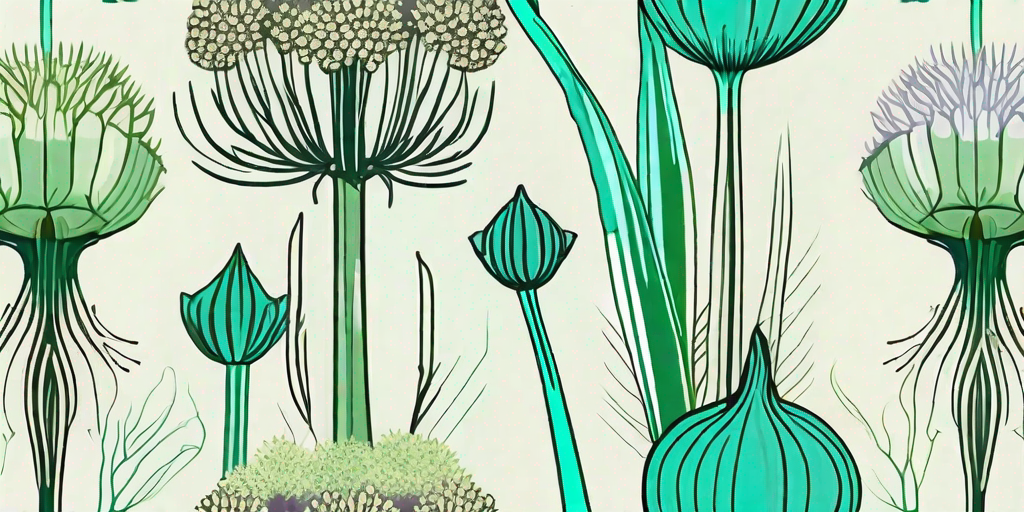
Alliums, those round, cheeky chappies of the flower world, are a joy to behold in any garden. Their vibrant blooms bring a dash of whimsy and a sprinkle of charm to any outdoor space. But what happens when the blooms fade and you're left with a bulb that looks more like an onion than a flower? Fear not, dear reader, for we have the answers you seek.
Alliums: A Brief Introduction
Before we delve into the nitty-gritty of allium care, let's take a moment to appreciate these floral wonders. Alliums, part of the onion family, are known for their large, spherical flower heads that burst into a riot of colour in late spring and early summer. They're the life of the garden party, the belle of the botanical ball, if you will.
There are over 700 species of alliums, ranging from the giant 'Globemaster' to the petite and delicate 'Blue Drumstick'. Each one has its own unique charm and characteristics, but they all share a love for well-drained soil and a sunny spot in the garden.
Post-Flowering Care: The Basics
Once the alliums have finished their flamboyant display, it's time for a little TLC. The first step is to remove the spent flower heads. This prevents the plant from wasting energy on seed production and encourages the bulb to store up reserves for next year's show.
But don't be too hasty with the secateurs! Wait until the flower head has completely dried out before you snip. This gives the plant time to photosynthesise and replenish its energy stores.
Feeding and Watering
After flowering, alliums need a good feed to help them recover. A balanced, slow-release fertiliser applied to the soil around the bulb will do the trick. Remember, alliums are like the Goldilocks of the plant world - they like their food and water just right. Too much and they'll get soggy feet; too little and they'll go hungry.
Watering should be done sparingly, as alliums prefer drier conditions. A good rule of thumb is to water when the top inch of soil is dry to the touch. And always water at the base of the plant, not the leaves, to avoid fungal diseases.
Pruning and Deadheading
Pruning is not necessary for alliums, but deadheading is. Deadheading is the process of removing spent flowers to prevent the plant from producing seeds. This helps the plant focus its energy on strengthening the bulb for next year's growth.
To deadhead an allium, simply snip off the spent flower head at the top of the stem. Be sure to leave the stem and leaves intact, as they will continue to photosynthesise and feed the bulb.
Winter Care: Preparing for the Big Sleep
As autumn approaches, your alliums will start to prepare for their winter slumber. The leaves will yellow and die back, signalling that it's time to reduce watering. Once the foliage has completely died back, it can be gently removed.
Most alliums are hardy and can withstand winter temperatures, but if you live in a particularly cold area, you may want to mulch around the bulbs to provide extra protection. A layer of straw or compost will do the trick.
Dividing and Storing Bulbs
If your alliums have been particularly happy and have produced lots of offsets (baby bulbs), you may want to divide them. This is best done in autumn, after the foliage has died back. Simply dig up the bulb clump, gently separate the offsets, and replant them at the correct depth and spacing.
If you need to store your allium bulbs over winter, make sure they are dry and free from disease. Store them in a cool, dry place in a paper bag or net until it's time to plant them out in spring.
Common Allium Problems and Solutions
Like all plants, alliums can sometimes run into problems. But don't worry, we've got the solutions to keep your alliums happy and healthy.
Problem: Yellowing Leaves
If your allium leaves are turning yellow, it could be a sign of overwatering. Remember, alliums like their soil on the dry side. Cut back on watering and make sure your soil has good drainage.
Problem: Bulb Rot
Bulb rot is often caused by soggy soil. If your allium bulbs are rotting, check your soil drainage and consider adding some grit or sand to improve it. Also, make sure you're not overwatering.
FAQs
- When should I cut back alliums?
Wait until the foliage has completely died back before cutting it off. This allows the plant to photosynthesise and store energy for next year's growth. - Can alliums grow in pots?
Absolutely! Just make sure the pot has good drainage and is large enough for the bulb to grow. - Do alliums spread?
Yes, alliums can produce offsets (baby bulbs) that can be separated and planted out to create more plants. - Are alliums deer resistant?
Yes, alliums are generally resistant to deer and other pests due to their onion-like taste.
And there you have it, folks! A comprehensive guide to caring for your alliums after they've finished flowering. With a little love and care, these cheeky chappies will reward you with their stunning blooms year after year. So, get out there and show your alliums some love!















